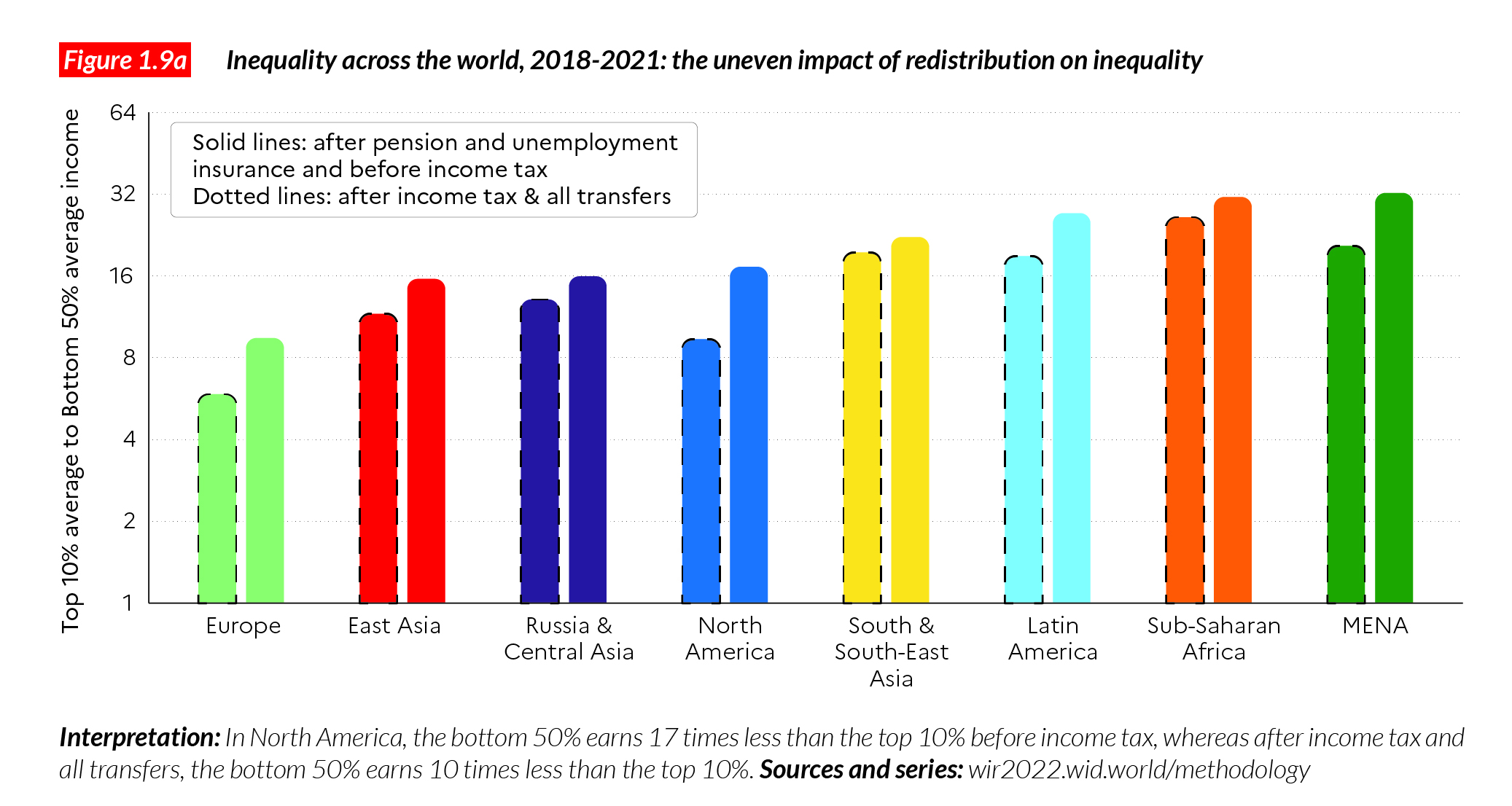Which of the Following Data Sources Best Measures Economic Inequality
Income inequality measures such as the generalised entropy index and the Atkinson index offer the ability to examine the effects of inequalities in different areas of the income spectrum enabling more meaningful quantitative assessments of qualitatively different inequalities. The Global Geospatial Inequality Measures GGIM contain Gini-coefficients of inequality for 234 countries and territories from 1992 to 2013.

Global Inequality How The U S Compares Pew Research Center
Gini index 0 indicates perfect equality.

. In a recent report for instance the Organization for Economic Cooperation and Development noted that in OECD countries the richest 10 of the population earn 96 times the income of the poorest 10 The US. These measures are constructed using worldwide geospatial satellite data on nighttime lights emission as a proxy for economic prosperity matched with varying sources of data on geo-located population counts. Gini index Which of the following is an indicator of increased democratization in Nigeria.
December 7 th 2021The World Inequality Report 2022 presents the most up-to-date and complete data on the various facets of inequality worldwide as of 2021. Financial year 2020 headline statistics show a revised Gini coefficient of 354 down from 363. Corrections have been made to the main points and accompanying data.
A simple arithmetic differences between a group rate and a specified reference point1 Absolute measures of inequality presented in this report are the absolute difference and the slope index of inequality. The Gini coefficient is based on the comparison of cumulative proportions of the population against cumulative proportions of income they receive and it ranges between 0 in the case of perfect equality and 1 in the case of perfect inequality. In the decades following World War II national accounts provided a measure that reflected economic progress throughout the country.
All data sources have strengths and. In contrast the Gini coefficient of 0 indicates minimum inequality which means that societys revenue is equally shared. For each country a chart shows how different dimensions of economic inequality have changed over time.
The most commonly used summary measure of economic inequality is the Gini coefficient which is directly linked to the Lorenz curve 9. There has been growing interest in inequality in recent years and this has partly been helped by rapid improvements in the tools available to measure it. After correcting this error Household income inequality UK.
The best source I found so far is. This Chartbook presents the empirical evidence about long-run changes in economic inequality. 1 Section V outlines more recent innovative sources including day and night-time satellite imagery mobile phone data and other more speculative sources.
Countries vary in terms of which measure is used - the Industrialized Countries and Latin America tend to use income surveys while South Asia Sub-Saharan Africa and the Middle East use consumption. The top income literature calculate the top X from data like this but most often seems to have data on mean or total income of each category. A detailed description of the data sources is given for.
Household surveys our main source of inequality measures track either income or consumption expenditure. Empowerment based on proportion of parliamentary seats occupied by females and proportion of adult females aged 25 years and older with at least some secondary education. The lower the Gini coefficient the lower is the inequality.
In summary we take the best available country estimates for the three indicators. Census Bureau publishes two measures of income inequality each year. It is not surprising that natural age-earnings profiles and measures of life-cycle wealth accumulation would show considerable inequality at any point in time.
The Gini coefficient is defined as the area between the Lorenz curve and the 45-degree line divided by the total area under the 45-degree line. And economic status based. Mathematically the Gini index formula is to compare area A with the area of a triangle.
A number of tools that use information to characterize the. The Lorenz Curve 2. Global wealth income gender and ecological inequalityThe analysis is based on several years work by more than one hundred researchers from around the world.
From 1963 to 1979 as the economy grew people at all levels. The following article will guide you about the two main methods adopted to measure inequality of income. Which of the following data sources best measures economic inequality.
With these numbers we can approximate the number of people on different income levels in every country. GDP per capita Population and Gini which is a measure of income inequality. Which of the following data sources best measures economic inequality Gini indexHDIGDP per capita Freedom House score Gini Index Which of the following is an indicator of increased democratization in Nigeria.
Absolute Measures of Inequality. This index called the Gender Inequality Index measures inequalities in three dimensions. 2019 timeseries data in this release were also impacted with a revised Gini coefficient of 360 up from 355.
The most-cited measures of inequality involve income. Reproductive health based on maternal mortality ratio and adolescent birth rates. Gini coefficient of 1 indicates maximum imbalance which means that all the income went to a single person and no one else got anything.
Gini Index Area A Area A Area B The Gini Index ranges from 0 to 1 100. Area Based Socioeconomic Measures. Income inequality among individuals is measured here by five indicators.
The chartbook covers 25 countries often over the course of more than one hundred years.

Economists Are Rethinking The Numbers On Inequality The Economist

The World Inequalityreport 2022 Presents The Most Up To Date Complete Data On Inequality Worldwide Global Wealth Ecological Inequality Income Inequality Since 1820 Gender Inequality
No comments for "Which of the Following Data Sources Best Measures Economic Inequality"
Post a Comment